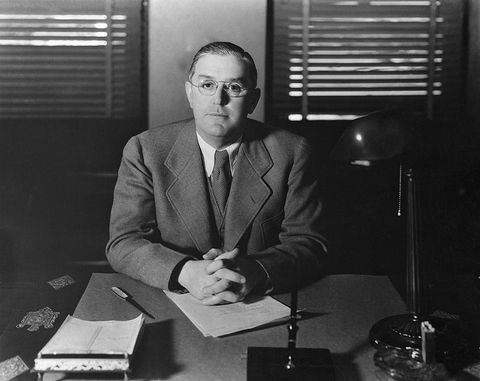While it’s well-known that almost anything goes in Hollywood today, there was a time when things on screen were much, much stricter. As Ryan Murphy’s new Hollywood series depicts, there was once a series of rules called the Hays Code that set guidelines for the content that released by movie studios in the United States between 1934 to 1968.
The official name of the is Hays Code is actually the “Motion Picture Production Code,” but it later became known as the Hays Code in honor of Will H. Hays, who was the president of the Motion Picture Producers and Distributors of America from 1922 to 1945. Here’s what you need to know about the code, and the effect it had on Hollywood.
Who created the Hays Code?
The code was created to help rehabilitate the image of the movie industry after a number of Hollywood scandals, including the murder and alleged rape of actress Virginia Rappe. Religious groups also called for censorship of the content seen on film, and the conservative publisher and film magazine journalist Martin Quigley helped recruit Jesuit priest Father Daniel A. Lord to help write a code to list what would be appropriate and inappropriate for movies.
The code was presented to Hays in 1930, but it wasn’t heavily enforced until 1934, when Joseph Breen began heading the Production Code Administration. The Irish Catholic Breen had a background in journalism and public relations, but it was later revealed that he may have been anti-Semitic, as he reportedly blamed Jewish studio heads for the “perceived decadence” in films.

What were some examples of the Hays Code?
The code was extremely lengthy, and it outlined topics that were not allowed to be shown on screen.
Sex/relationships:
Crimes:
Religion
What movies were affected by the Hays Code?
A number of TV and film productions were affected by the Hays Code, and you can check out a full list here. On I Love Lucy, the word “expecting” was used instead of “pregnant” (the word was seen as vulgar), and Lucy and Ricky slept in different beds. Pre-code, cartoon character Betty Boop was a flapper that wore short skirts, but post-code she wore longer garments and stockings that covered her legs. In Gone with the Wind, the childbirth scene is only seen in shadows, and the now famous line “Frankly Scarlett, I don’t give a damn,” was only kept in the movie because it also appeared in the original movie.
Unfortunately, the anti-miscegenation part of the code meant that many actors of color were discriminated against even more, and Chinese-American actress Anna May Wong wasn’t cast as the lead in The Good Earth because the male lead was a white actor.
However, the code did not apply to stage productions, so aspiring screenwriters often wr0te plays about subjects that were seen as too controversial for Hollywood.
When was the Hays Code abolished?
Some films produced outside the mainstream studio system were able to get around the code, the code began to weaken in the ’40s when the topics of rape and interracial relationships appeared in more films. Additionally, many filmmakers found covert ways to get around the code. As director Edward Dmytryk explained, “[The Code] had a very good effect because it made us think. If we wanted to get something across that was censorable…we had to do it deviously. We had to be clever. And it usually turned out to be much better than if we had done it straight.”
In the ’50s, the movie industry faced even more competition from TV (some families were skipping the theater to stay home) and from foreign films, which were not bound by the code. In 1952, the case of “Joseph Burstyn, Inc. v. Wilson” saw the U.S. Supreme Court overrule its 1915 decision that free speech did not apply to motion pictures, and they also ruled that the New York Board of Regents could not ban the short film The Miracle because it violated the First Amendment. This ruling reduced the threat of government regulation in the film industry, and PCA’s hold over Hollywood was greatly lessened.
By 1954, Breen had retired, and the Sexual Revolution of the ’60s meant audiences were more open to topics that had been previously thought of as vulgar. The Hays Code was officially replaced in 1968 by the Motion Picture Association of America’s film rating system (MPAA), and it had four rating tiers: G for general exhibition (all ages), M for mature audiences (people over the age of 12), R for restricted (children under 16 must be accompanied by an adult), and X for extremely graphic (only people 18 or over will be admitted). And while the ratings system has changed slightly since then, the MPAA is still in charge of rating films.
Source: Read Full Article
